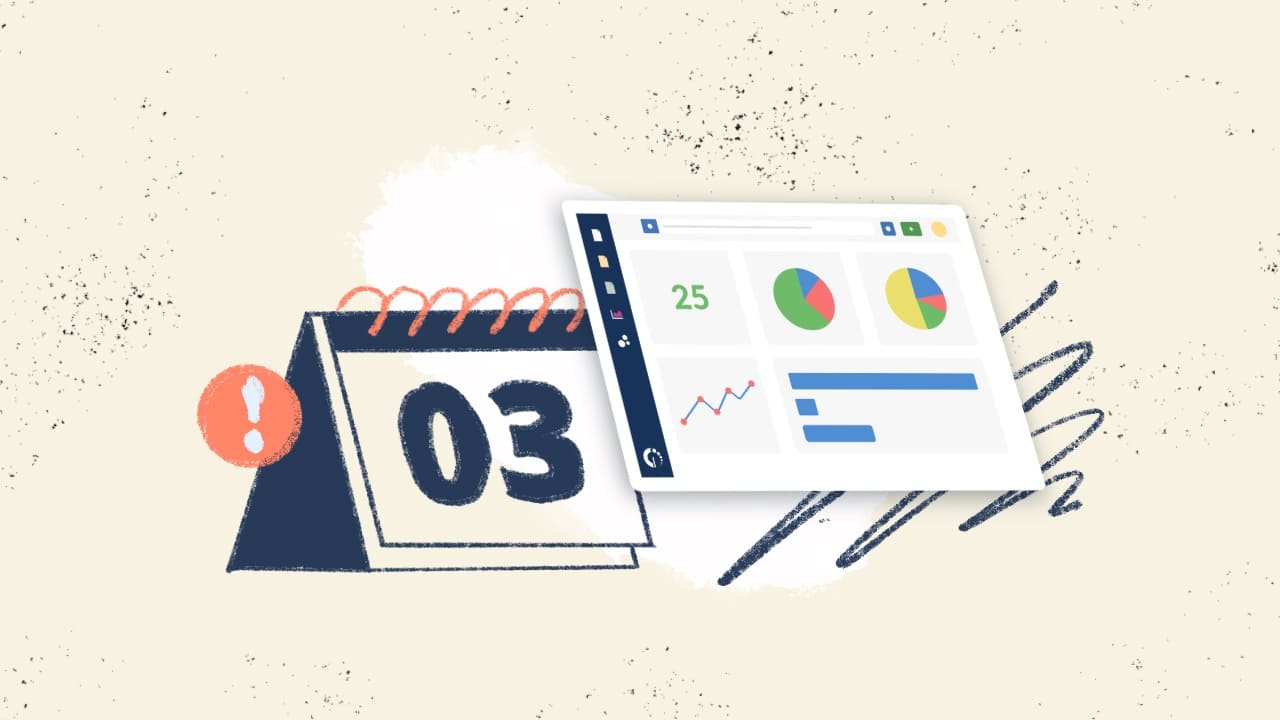In the world of Service Management, ensuring your software works seamlessly is critical. This is where a software warranty comes into play. A software warranty guarantees that your software will perform as intended for a specific period, and if it doesn’t, the vendor is responsible for providing fixes, updates, or even replacements.
It’s more than just a safeguard; it’s a vital part of minimizing the cost of downtime, improving service delivery, and ensuring that businesses stay on track. But, as with any agreement, understanding the ins and outs of these warranties is essential.
In this article, we’ll explore the concept of software warranties, different types of warranties, their importance for businesses, and how they fit within the IT Service Management (ITSM) world. By the end, you’ll be equipped with the knowledge to better understand your software contracts and how warranties protect your operations. Let’s dive in!
|
|
What is a software warranty?
At its core, a software warranty is a promise from the vendor that the software will perform as described in the documentation for a certain period. It typically covers defects or errors that prevent the software from functioning correctly. If the software fails to meet these expectations, the vendor is obliged to provide a solution, which might involve fixing bugs, delivering updates, or, in some cases, replacing the software entirely.
In Service Management, software warranties are essential because businesses rely on a smooth, uninterrupted flow of operations. When software crashes or doesn’t meet expectations, it can lead to severe disruptions. A solid software warranty ensures that the vendor remains accountable for the product’s performance, which is a huge relief for businesses focused on keeping their services running optimally.

Types of software warranty
Not all software warranties are created equal. There are different types of warranties that cater to different needs and situations. Let’s look at some common types, illustrated with real-world clause samples.
1. Limited warranty
A limited warranty typically covers only specific issues, like defects in the software’s design or functionality. It’s called “limited” because it doesn’t cover problems caused by external factors such as improper use or third-party interference.
Limited warranty clause example:
"The vendor warrants that for a period of 180 days from the delivery date, the software will operate in substantial accordance with the provided specifications under normal use. This warranty does not cover issues caused by third-party applications, improper use, or modifications made by the customer."
2. Extended warranty
An extended warranty offers a longer period of coverage, usually available for an additional fee. It provides peace of mind for businesses that want long-term protection beyond the initial warranty period.
Extended warranty clause example
"The vendor agrees to provide an extended warranty for one year from the date of installation, covering defects in materials and workmanship. This extended warranty is valid only if the software is used in accordance with the vendor’s documentation."
3. SaaS warranty
In the world of Software-as-a-Service (SaaS), warranties look a little different. Rather than covering defects, SaaS warranties focus on uptime and service availability, promising that the software will be accessible a certain percentage of the time.
SaaS warranty clause example
"The vendor warrants that the software service will be available 99.9% of the time, excluding scheduled maintenance and factors outside the vendor’s control. In case of failure to meet this service level, the customer will be entitled to service credits."
4. No warranty / As-is warranty
Some vendors provide the software with an “as-is” warranty, meaning they offer no guarantees about its performance. This is risky for businesses, as they must assume all responsibility for any issues that arise.
No warranty / As-is warranty clause example
"Except as expressly provided herein, the software is provided 'as-is,' and the vendor disclaims all warranties, including any implied warranties of merchantability and fitness for a particular purpose."

Importance of software warranty for businesses
Software warranties provide a critical safety net for businesses. Here’s why they’re so important:
First, warranties protect businesses from unforeseen costs associated with software malfunctions. If a key piece of software fails, it can lead to productivity losses, missed opportunities, and frustrated customers. With a warranty, the cost of fixing these issues falls on the vendor, not the business.
Second, warranties build trust between the software vendor and the customer. When a vendor offers a robust warranty, it signals confidence in the product’s quality and reliability. This trust is crucial for businesses relying on software to power essential services.
Key benefits of software warranties for businesses:
- Cost savings: Vendors bear the responsibility of fixing bugs and defects during the warranty period.
- Risk mitigation: Businesses can operate with peace of mind, knowing that critical software failures will be addressed.
- Vendor accountability: Warranties hold vendors accountable for their products’ performance.
- Improved service continuity: Warranties ensure that software issues don’t disrupt service delivery.
- Increased customer trust: A solid warranty fosters confidence in the vendor’s software.
Common pitfalls in software warranty agreements
While software warranties are designed to offer protection, there are common pitfalls that businesses should be aware of. One major issue is ambiguous language in warranty clauses, which can lead to misunderstandings. For example, a clause might promise "reasonable efforts" to fix defects, but what qualifies as reasonable? Without specific timeframes or clear remedies, businesses might find themselves stuck with unresolved issues.
Another common pitfall is limited scope. Some warranties exclude important elements like third-party integrations or only cover certain types of defects. This leaves businesses vulnerable to gaps in coverage. Always read the fine print carefully to ensure the warranty aligns with your operational needs.
Common pitfalls:
- Vague language: Terms like "reasonable efforts" can be subjective.
- Short coverage periods: Watch out for warranties that expire too quickly.
- Exclusions: Some warranties exclude third-party components or custom modifications.
Software warranties and IT Service Management (ITSM)
In the IT Service Management (ITSM) ecosystem, software warranties play a crucial role, particularly when dealing with incidents, problems, and changes. When a business’s software encounters issues that affect service delivery, the service desk relies on warranties to escalate the problem back to the vendor for resolution.
For example, during Incident Management, if software under warranty causes a service outage, IT teams can quickly involve the vendor to fix the issue without incurring extra costs. Similarly, in Problem Management, if recurring issues with a specific software component are identified, the warranty ensures that the vendor is responsible for long-term fixes or updates.
Warranties also intersect with Change management. When upgrading or modifying software under warranty, the vendor must ensure that the new version adheres to the same standards, reducing the risk of new issues arising post-change.

The role of Service-Level Agreements (SLAs) in software warranties
In the SaaS world, Service Level Agreements (SLAs) are often tied closely to software warranties. While a warranty might cover defects and bugs, an SLA focuses on uptime and performance guarantees. This makes SLAs essential for cloud-based services, where service interruptions can have serious consequences.
For instance, an SLA might promise 99.9% uptime, meaning the service will be available for all but 0.1% of the time in a given month. If this commitment is not met, the customer may be entitled to service credits or other compensation. When negotiating SaaS contracts, it’s important to ensure that the SLA aligns with the needs of your business and complements the software warranty.
The future of software warranties in the age of SaaS
As businesses increasingly move toward SaaS models, the nature of software warranties is evolving. Traditional warranties that cover product defects for a set time are giving way to SLAs, which focus on service availability and performance.
In a SaaS environment, the software is continuously updated and maintained by the vendor, so warranties emphasize uptime and reliability rather than fixing static defects. Another example: A vendor might promise 99.9% uptime, and if they fail to deliver, the customer receives service credits as compensation.
This shift reflects the dynamic, cloud-based nature of modern software. Instead of focusing on one-time fixes, SaaS warranties ensure ongoing performance, which is essential for businesses that rely on these platforms to run their services.
What to look for in a software warranty
When evaluating a software warranty, businesses should consider several key factors. The first is coverage—what exactly does the warranty protect against? Look for specifics like the duration of the warranty, the types of defects covered, and any exclusions (such as third-party software or customer modifications).
Second, it’s important to examine the remedies available. If the software doesn’t perform as promised, will the vendor fix the issue, replace the software, or offer a refund? These are critical points to clarify before signing any contract.
Finally, consider the vendor’s responsiveness. How quickly are they obligated to address and fix issues? A strong warranty will outline a clear timeline for resolutions, ensuring that your operations aren’t disrupted for long.
Software warranty vs. software maintenance
While warranties and maintenance agreements often seem similar, they serve different purposes. A software warranty covers defects and ensures that the software will work as promised for a specific period. Once that period ends, the warranty expires, and the customer is responsible for any future issues unless they purchase additional coverage.
On the other hand, software maintenance goes beyond just fixing bugs. It often includes regular updates, upgrades, and enhancements that improve the software’s functionality over time. Maintenance agreements usually extend past the warranty period and ensure continuous support.
For businesses, having both a warranty and a maintenance agreement provides comprehensive protection—warranties ensure the software works as promised at the start, and maintenance ensures it continues to evolve and improve.

Global perspectives: Do software warranties differ by region?
Software warranties can differ significantly based on geographical region due to varying laws and regulations. For example, consumer protection laws in the European Union (EU) are generally stricter than those in the United States, meaning warranties for software sold in the EU may offer more comprehensive protection.
In some regions, vendors are required to provide a minimum warranty period, while in others, warranties might be more flexible. It’s important for businesses operating globally to understand these differences and ensure that their software warranties comply with local regulations, especially when dealing with cross-border contracts.
How to automate hardware warranty checks with InvGate Asset Management
Automating hardware warranty checks with InvGate Asset Management streamlines managing multiple device warranties. Start by incorporating each asset's warranty information into InvGate's unified asset inventory. Once the data is stored, you can set up automation rules for proactive warranty management.
These rules trigger based on events like approaching warranty expiration or status changes. For example, you can configure the system to send reminders, update asset status, or take actions when specific warranty conditions are met.
This approach maximizes warranty use and reduces downtime, ensuring devices are maintained or replaced efficiently. Try it for yourself! Just ask for your 30-free trial.
To sum up
A software warranty is more than just a nice-to-have; it’s a crucial part of the software lifecycle that ensures businesses aren’t left high and dry when things go wrong. From protecting against costly downtime to ensuring vendor accountability, warranties play a significant role in service management.
Whether you're negotiating a limited warranty or managing uptime through a SaaS warranty, understanding the specifics of each warranty clause can save your business time, money, and headaches in the long run. With the rise of cloud services, the nature of software warranties will continue to evolve, but their importance in maintaining reliable service remains constant.
Frequently Asked Questions (FAQs)
1. What is a software warranty?
A software warranty is a contractual promise from the vendor to fix or replace software if it fails to perform as expected within a specific period.
2. What are the types of software warranties?
Common types include limited warranties, extended warranties, SaaS warranties, and as-is warranties. Each type offers different levels of coverage and duration.
3. Why is a software warranty important for businesses?
It minimizes risks, reduces downtime, ensures vendor accountability, and protects businesses from the costs of fixing software defects.
4. How do software warranties fit into IT Service Management (ITSM)?
Software warranties help IT teams manage incidents and problems by ensuring vendors are responsible for fixing software-related issues that disrupt service.
5. What’s the difference between software warranty and software maintenance?
A warranty covers defects within a certain period, while maintenance involves ongoing updates.















